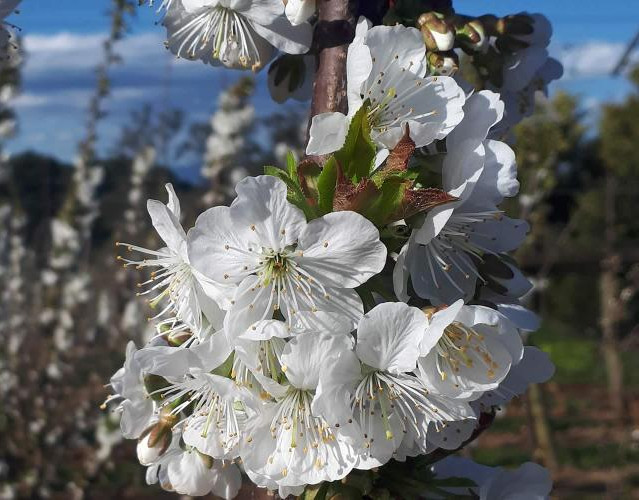Last season, Chile exported nearly 83 million boxes of cherries, a volume reduced by 15% compared to expectations, due to climatic effects. However, for the next season, a 40% increase is expected, reaching between 115 and 120 million boxes.
“This increase is mainly due to the rise in production capacity, resulting, among other things, from the good results generated by the development of logistical infrastructure, which has made Chilean exporters more competitive and agile in delivering fresh fruit,” commented Manuel José Alcaino, president of Decofrut.
One of the key elements of this growth is innovation in export logistics. “The Cherry Express program, a logistical solution created about five years ago, has reduced transit times between Chilean ports and China by 10 days, ensuring that the fruit arrives in optimal conditions. This improvement has been so successful that it has been extended to other fruits, such as grapes and blueberries, under the name Asia Express,” explains Alcaino.
“Additionally, Chilean exporters have expanded the number of terminals and entry ports in China, distributing cherries not only to the major coastal cities but also to second- and third-tier cities in the interior of the country, where the demand for fresh produce has significantly increased. This strategy has allowed Chile to secure a solid and growing market in the Asian giant, which continues to be the main destination for its cherries, absorbing 92% of last year's exports.”

Although China remains the primary market, it is expected that in the coming seasons, both Europe and the United States will register growth in receiving Chilean cherries. “In recent years, Chile had reduced shipments to Europe, dropping from 1.3 million boxes in the 2021/2022 season to only 800,000 last year (2023), due to the greater focus of exports towards Asia.
However, with the expected increase in production, exporters hope to recover lost volumes and increase their presence in both North America and the European continent, as both markets are major consumers of cherries during the northern hemisphere's season,” explains Alcalino.
A factor that plays in favor of Chilean cherry exporters is the differentiation of production seasons between the northern and southern hemispheres. “While production in the north occurs between May and August, in the southern hemisphere, and particularly in Chile, the cherry season runs from November to February.
This means there is no direct competition between northern and southern producers, allowing Chilean exporters to dominate the market during the winter months of the northern hemisphere,” says Alcalino.
The growth of the cherry industry in Chile is impressive, but it is not without challenges. “One of the main challenges for the future will be to maintain the quality of the product and ensure efficient distribution in emerging and alternative markets.
Additionally, exporters will have to face the effects of climate change, which has already impacted production in previous seasons, and further optimize their logistical chains to ensure that Chilean cherries remain an attractive option in international markets,” explains Alcaino.
Source: Freshplaza
Image: Freshplaza
Cherry Times - All rights reserved











